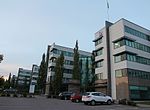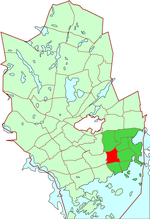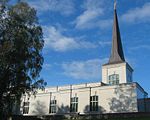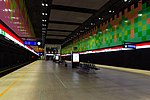Mankkaa

Mankkaa (Finnish) or Mankans (Swedish) is a suburb of Espoo, located between Tapiola and Kauniainen, with a population of 7,704 (2006), of which 704 speak Swedish as a first language (2005). Most of Mankkaa falls under the postal code 02180, with 02630 being the code of the areas situated near the Helsinki-Turku freeway in the north. The area under postal code 02180 has one of the highest wage incomes in whole of Finland. ref. [1] The main thoroughfare in Mankkaa is Mankkaantie, which had been heavily congested with traffic during rush hours until Ring II was completed in 2000. The second major road is Sinimäentie, which is lined with large office buildings and stores. The first Lidl in Espoo was opened in Mankkaa in 2003. Teatteri Hevosenkenkä, a theater catering to a child and preteen audience, is located in Mankkaa. The theater was founded in 1975 by Kristiina Aropaltio and Sara Sirén. However, the building itself dates back to 1899 and was previously used as a school. Teatteri Hevosenkenkä also houses an art gallery with changing exhibitions.
Excerpt from the Wikipedia article Mankkaa (License: CC BY-SA 3.0, Authors, Images).Mankkaa
Torpparintie, Espoo Mankkaa (Suur-Tapiola)
Geographical coordinates (GPS) Address Nearby Places Show on map
Geographical coordinates (GPS)
| Latitude | Longitude |
|---|---|
| N 60.2 ° | E 24.766666666667 ° |
Address
Torpparintie 19
02180 Espoo, Mankkaa (Suur-Tapiola)
Finland
Open on Google Maps











